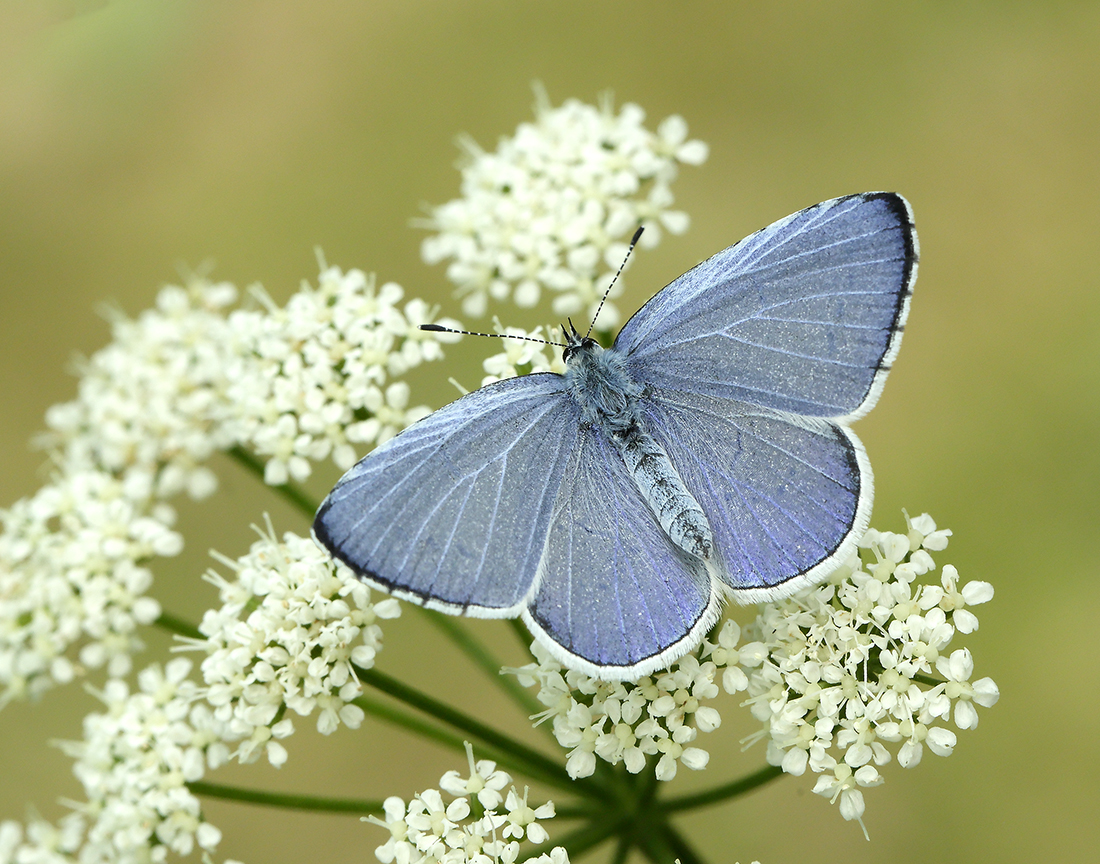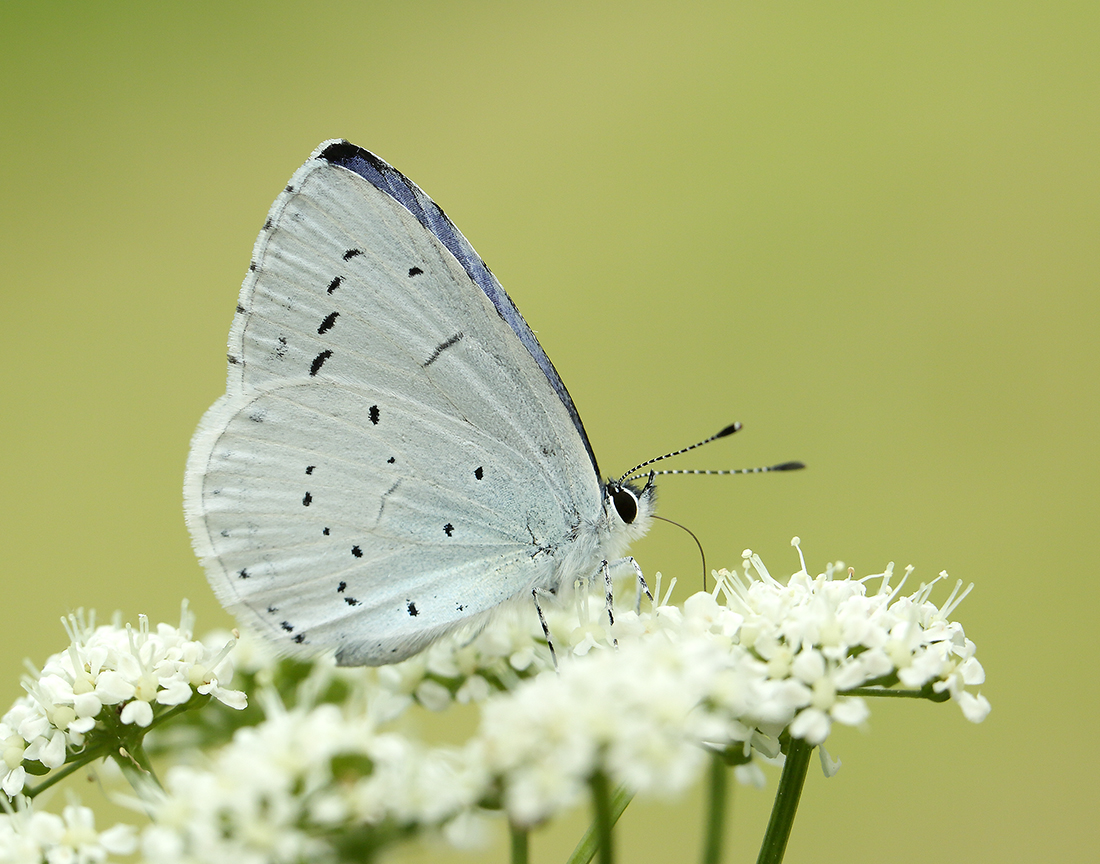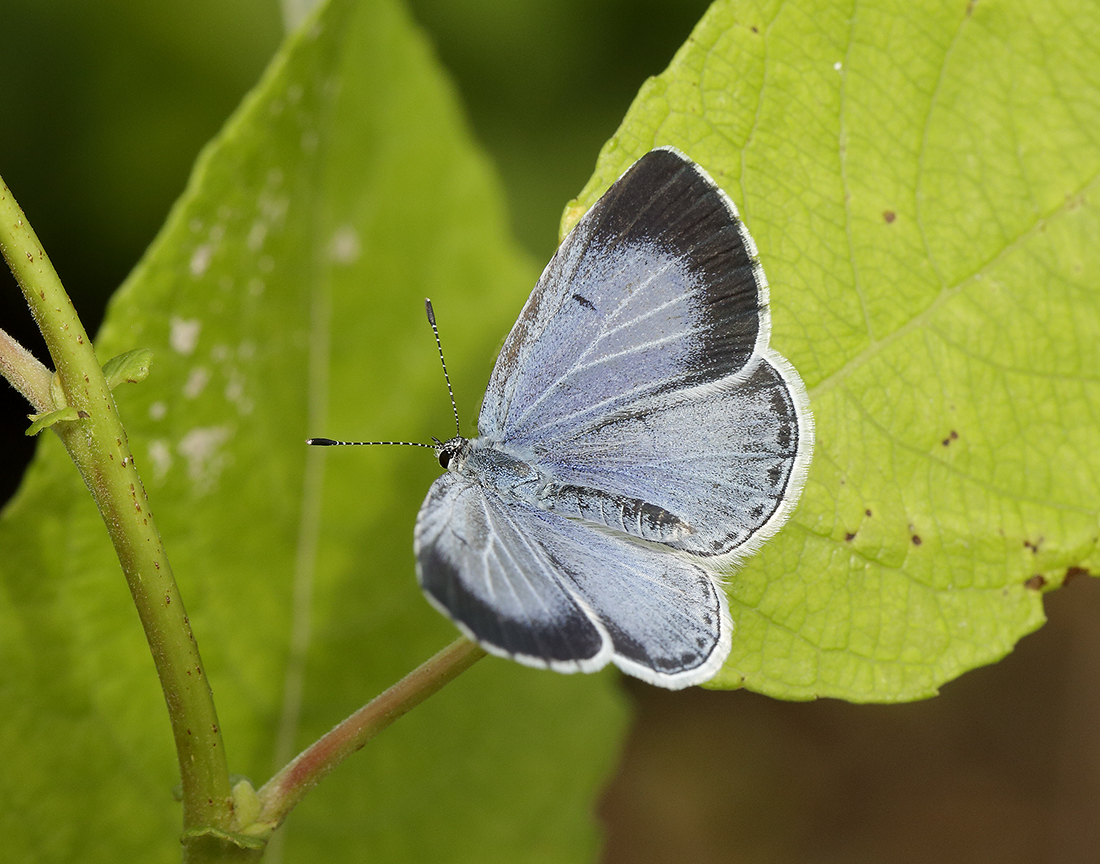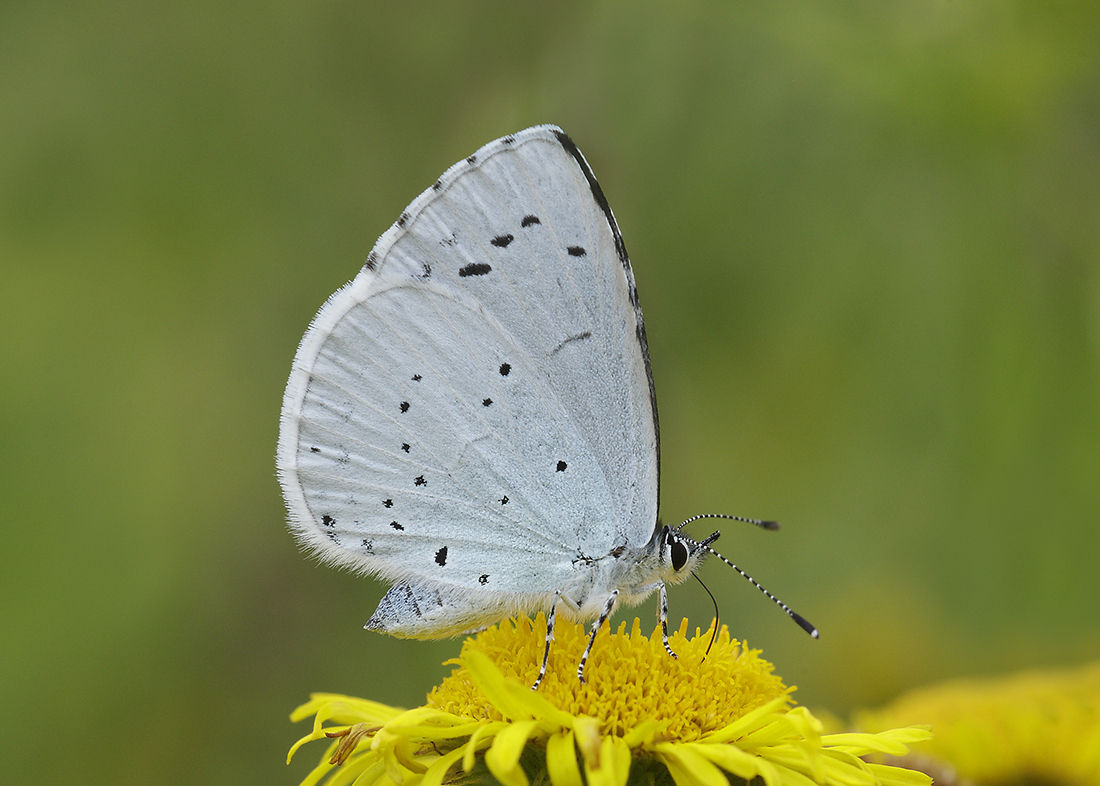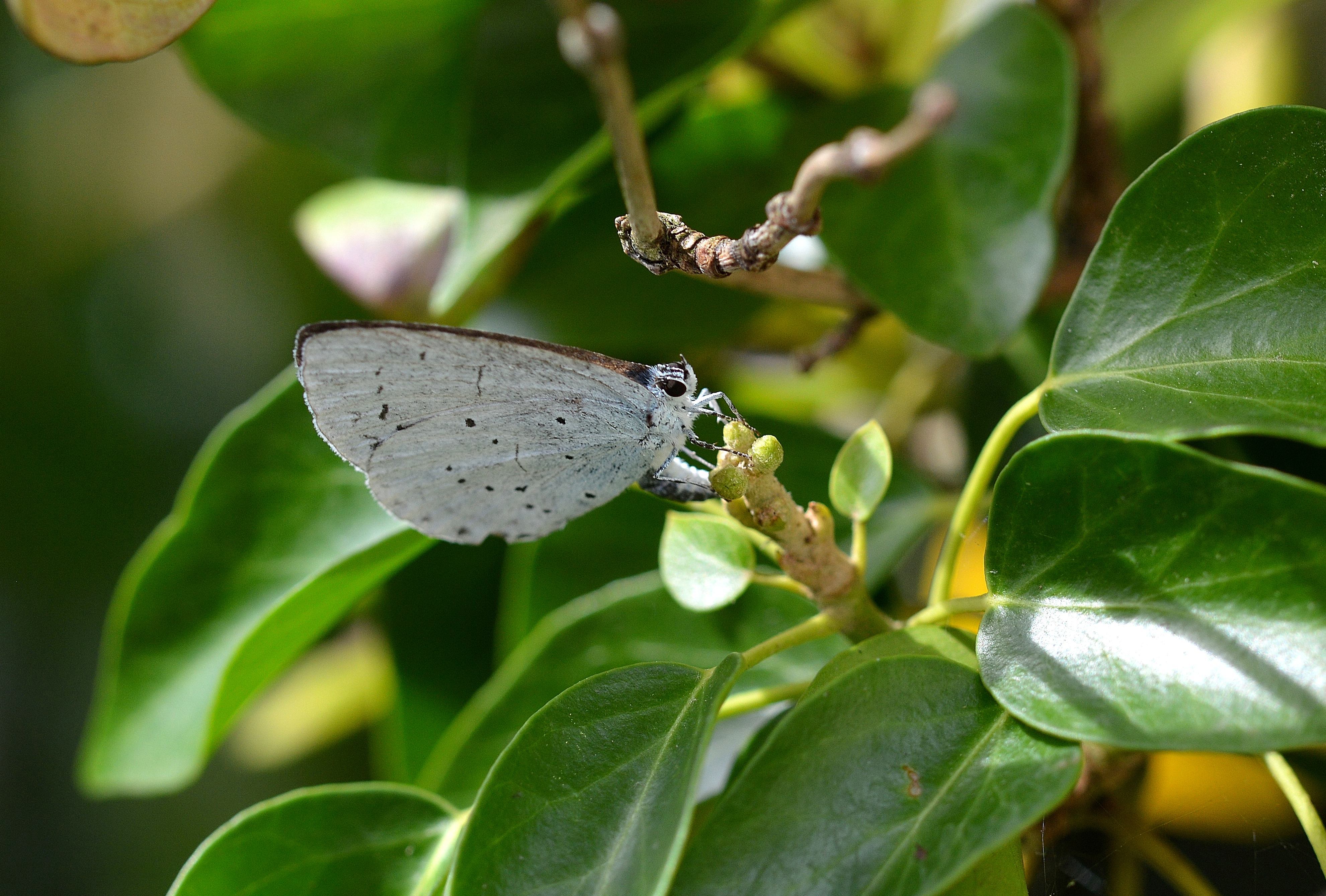The first Scottish Holly Blue record came from Dr John Walker, the ‘mad minister of Moffat’, seen in the Manse garden there in 1773. Until 2023 there were only sporadic records from Dumfries and Galloway, although the Holly Blue was well-established in north Cumbria.
However, in 2023 and 2024 the Holly Blue has spread rapidly here, as well as in other parts of Scotland. The four records submitted to iRecord in 2022 for the region were followed by over 60 in 2023 and nearly 100 in 2024! Most records come from coastal areas and river valleys, and it seems certain it will continue to spread throughout lowland parts of the region.
Identification
The Common Blue is sometimes mistaken for the Holly Blue but the latter has silvery blue underwings. Of the blue butterflies it is the one most likely to be seen in gardens or parks, as it is not dependent on flower-rich grasslands, unlike the Common Blue.
Life cycle & flight period
The Holly Blue has two generations a year, the adults flying from mid-April to late May, and again from early July until mid-September. Overwinters as a caterpillar.
Larval foodplant
In spring the females lay their eggs primarily on Holly, while in the summer they usually choose Ivy, the caterpillars feeding on the developing berries of both species. Other plants may be used however, and south of the border the spring brood has been reported as using Common Spindle and Common Dogwood, while the summer generation females can use Common Buckthorn, Snowberry and even Gorse.
Habitats
Most sightings come from urban areas and the Holly Blue is traditionally associated primarily with gardens, parks and churchyards. However, it can also be found in the countryside, for example along woodland edges rich in Holly and Ivy.



